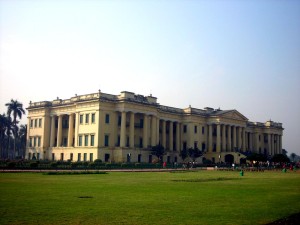Wasef Manzil, alternately known as Wasef Manzil or New Palace had been constructed by Nawab Wasif Ali Mirza Khan. It is placed by the banks of the Ganges river while you’re heading towards the south from the back of Hazarduari (a major attraction here). The entire building was constructed under the able supervision of Surendra Barat, a Bengali engineer and Mr. Vivian, who was the officer of the Public Works Department of the Nadia Rivers Division. The building which shares a proximity to the Hazarduari Palace was exclusively used by the Nawab as his palace.
The 1897 earthquake had destroyed substantial portions of the palace. There were restoration attempts made later but without the second storey that had come down in minutes after the earthquake. The palace is actually built between Hazarduari Palace and Dakshin Darwaza, on the Nizamat Fort Campus. It’s just parallel to the Bhaghirathi- Hooghly River and just opposite the South Zurud Mosque of the campus.
The palace had majorly been designed as a castle with tiny corner turrets on the corners. The palace, which is now maintained by the Archeological Survey of India has a semi-circular pediment with the Nawabs of Murshidabad’s coat of arms on it. The garden space in front of the palace has several marble statues and a fountain. Framed by a neat iron railing, the palace has a Norman archway as the main entrance. The statues and staircases are etched out of marble and serve as tourist attractions as well.
How to reach Wasef Manzil
The driving distance from Murshidabad to Wasef Manzil is 2 kms. Depending upon traffic conditions you can reach this place within 5-10 minutes.
Transportation
Murshidabad is a major tourist hot spot in West Bengal. It receives thousands of footfalls every year and the number is increasing with every passing day. You can reach Murshidabad by train, bus or flight since it is well connected by all these routes. From Murshidabad you can rent a car for Wasef Manzil. The two nearest railway stations are Baharampur Court and Murshidabad railway Station.
Kolkata has the nearest 9to Murshidabad) airport connected with flights to major cities.
Accommodation
Grand World Hotel and Hotel Sonar Bangla are the two nearest accommodations near Wasef Manzil.
